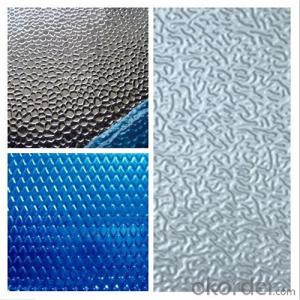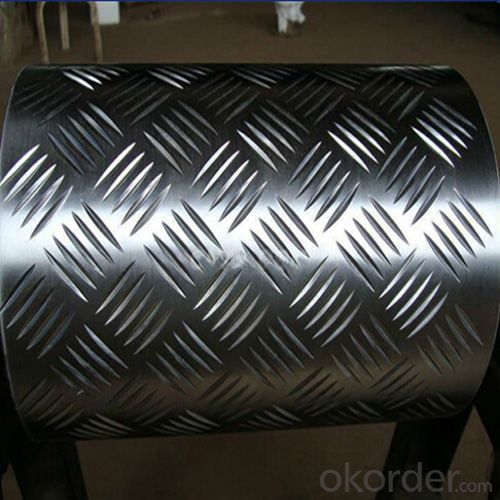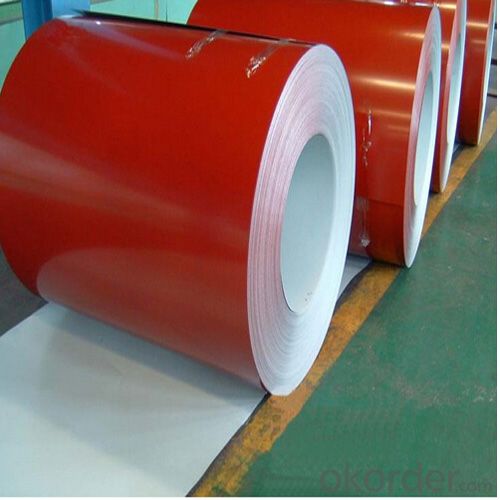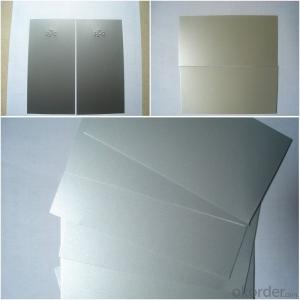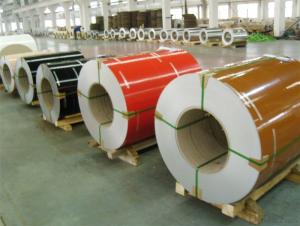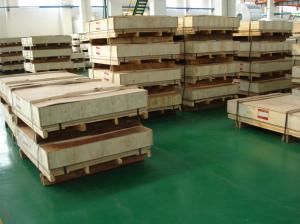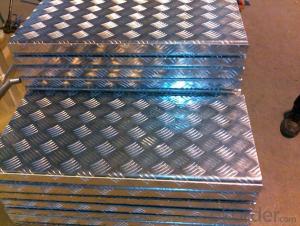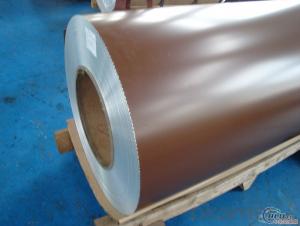Copper Colored PVDF Embossed Diamond Coated Aluminum Sheet
- Loading Port:
- Shanghai
- Payment Terms:
- TT OR LC
- Min Order Qty:
- 5 m.t.
- Supply Capability:
- 10000 m.t./month
OKorder Service Pledge
OKorder Financial Service
You Might Also Like
Specification
1.Structure of PE PVDF Embossed Diamond Color Coated Aluminum Sheet Description:
PE PVDF Embossed Diamond Color Coated Aluminum Sheets are widely used for building use, decoration use, making cookware, busing making, shipping building, airplane making and so on。Sizes of aluminum sheet for decoration use: Thickness: 0.3mm~300mm Width: Under 2000mm ( Standard: 1000mm, 1219mm, 1500mm, 1540mm) Length: Under 10000mm. Products commonly used in signs, billboards, building exterior decoration, bus body, high factory wall decoration, kitchen sink, lamp, fan, electronic components, chemical apparatus, sheet processing, deep drawing or spinning hollow ware, welding parts, heat exchangers, Bell surface and plate, plates, kitchen utensils, accessories, safety equipment and other.
2.Main Features of PE PVDF Embossed Diamond Color Coated Aluminum Sheet:
Thickness: 0.20mm-8.0mm(Coil), up to 320mm(Sheet/Plate)
Width: 8mm-2400mm
Temper: H1X, H2X, H3X, O, HXXX all available
Continuous casting and hot rolled both available
3. PE PVDF Embossed Diamond Color Coated Aluminum Sheet Images:
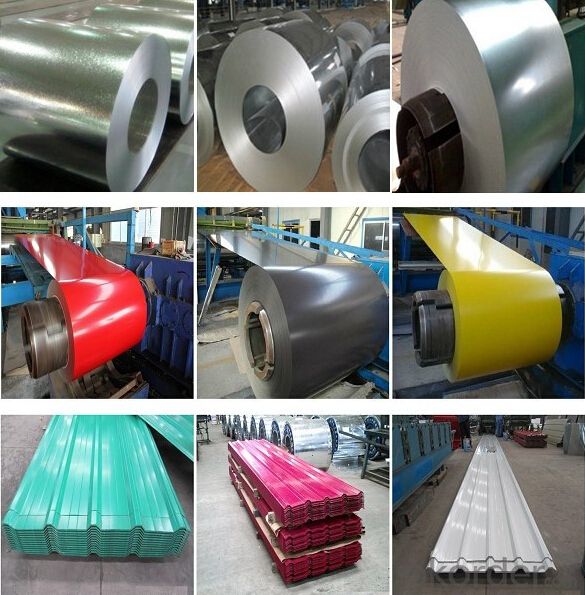

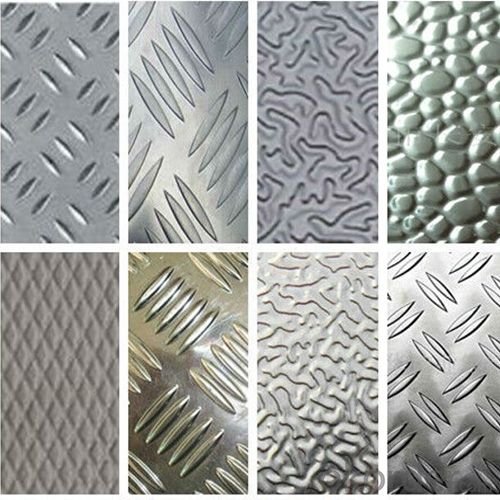
4. PE PVDF Embossed Diamond Color Coated Aluminum Sheet Specification:
| Aluminium sheet | |||||
| Alloy No. | Thickness (mm) | Width (mm) | Length (mm) | Temper | |
| A1050,A1060, A1070,A1100 | 0.2-100 | 20-2200 | 20-8000 | O,H12,H22,H14,H16,H18, H24,H26,etc | |
| 3A21,A3003,A3105,A3004 | 0.2-100 | 20-2200 | 20-8000 | O,H14,H18,H24,etc | |
| A5052 ,A5005,A5083,A5754 | 0.2-100 | 20-2200 | 20-8000 | O,H18,H24,H32,H34,H111,H112 ,etc | |
| A6061,A6082,A6063 | 0.2-200 | 20-2200 | 20-8000 | T4,T6, T651,etc | |
| A8011 | 0.2-100 | 20-2200 | 20-8000 | O,H12,H22,H14,H16,H18,H24,H26, etc | |
5.FAQ
Q1.How long have you been in this product?
A1:More than 10 years.
Q2. What's the minium quantity(MOQ)?
A2. 5 Metric tons
Q3. How long is shipping time?
A3. 7 (ready-made products)-25 days(OEM)
Q4. How do you guarantee the quality?
A4. 1. Cooperating and Exchaning experience with sevral quoted aluminum companies
2. Japanese and Swiss production line and skilled works (regular training and testing)
3. more than 10 years production experience.
Q5. Do you have after sale service?
A5. Yes. Any quality problem occurs within one year, pls take photoes,we will be responsible.
- Q: How do you ensure the dimensional accuracy of aluminum sheets?
- To ensure the dimensional accuracy of aluminum sheets, several steps can be taken: 1. Precise Manufacturing Process: The aluminum sheets should be manufactured using advanced equipment and techniques that guarantee accurate dimensions. This involves using reliable and calibrated machinery to ensure the sheets are cut, rolled, and formed precisely to the desired specifications. 2. Quality Control Measures: Implementing a comprehensive quality control system is crucial in maintaining dimensional accuracy. This involves regular inspections and measurements at various stages of the manufacturing process to identify any deviations from the required dimensions. This can be done using precision measuring instruments such as calipers, micrometers, or laser scanning devices. 3. Material Selection: The quality of the aluminum used in sheet production plays a significant role in dimensional accuracy. Using high-quality aluminum with consistent properties and minimal impurities ensures that the sheets maintain their desired dimensions throughout the manufacturing process. 4. Temperature Control: Aluminum sheets can be sensitive to temperature variations, which can cause expansion or contraction and affect dimensional accuracy. Maintaining a controlled temperature environment during manufacturing helps minimize these effects and ensures the sheets retain their intended dimensions. 5. Proper Handling and Storage: Aluminum sheets should be handled and stored with care to prevent any deformation or damage that could impact their dimensions. This includes using appropriate lifting equipment, avoiding excessive bending or twisting, and storing them in a controlled environment to prevent exposure to moisture or extreme temperatures. 6. Regular Calibration: It is essential to regularly calibrate the measuring instruments used in the dimensional inspection process. This ensures accurate measurements and eliminates any potential errors that may arise from instrument drift or wear. By following these steps, manufacturers can minimize dimensional variations and maintain the desired accuracy of aluminum sheets, meeting the specific requirements of various applications in industries such as automotive, aerospace, construction, and electronics.
- Q: What is the coefficient of friction for aluminum sheets?
- The coefficient of friction for aluminum sheets can vary depending on the specific conditions, such as the surface it is in contact with and the presence of lubricants or contaminants. In general, the coefficient of friction for aluminum sheets is relatively low, ranging from 0.2 to 0.6. However, it is important to note that these values are approximate and can be influenced by various factors.
- Q: The question asks about the duration aluminum sheets can last and how this compares to the lifespan of other materials.
- <p>The lifespan of aluminum sheets can vary significantly based on the environment and usage conditions. Generally, aluminum sheets have a long lifespan, often lasting 50 years or more without significant deterioration when properly maintained. This durability makes aluminum sheets a popular choice for construction and manufacturing applications. Compared to other materials, such as steel, aluminum is lighter and more resistant to corrosion, which can extend its lifespan in certain environments. However, steel may be more suitable for applications requiring high strength, while aluminum excels in applications where weight and corrosion resistance are priorities.</p>
- Q: This question asks for methods to guarantee the safety and reliability of a project when using aluminum sheets.
- <p>To ensure your project's safety and reliability using aluminum sheets, follow these steps: 1. Choose high-quality aluminum sheets with the appropriate thickness and grade for your project's requirements. 2. Ensure proper design and engineering to withstand expected loads and stresses. 3. Use appropriate fasteners and joinery methods to secure the sheets, avoiding stress concentrations. 4. Implement corrosion protection measures such as coatings or anodizing, especially for outdoor applications. 5. Perform regular inspections and maintenance to check for signs of wear, corrosion, or damage. 6. Adhere to safety standards and regulations for aluminum construction. 7. Consult with professionals or engineers experienced in aluminum fabrication for guidance and validation.</p>
- Q: This question asks about the impact of aluminum sheets on the air quality inside a building.
- <p>Aluminum sheets themselves do not directly affect indoor air quality. They are inert materials that do not emit volatile organic compounds (VOCs) or other harmful substances. However, the installation process might involve adhesives or sealants that could release VOCs temporarily. Proper ventilation during and after installation can mitigate this issue. Additionally, aluminum sheets can contribute to better air quality by enhancing thermal performance, reducing energy consumption for heating and cooling, and indirectly lowering emissions from power plants.</p>
- Q: I may use the copper or brass for an inlay on a decorative piece of aluminum I'm working on.....
- This Site Might Help You. RE: which has the lower melting temperature....aluminum, copper, or brass...can you list all 3? I may use the copper or brass for an inlay on a decorative piece of aluminum I'm working on.....
- Q: What is the typical yield strength of aluminum sheets?
- The yield strength of aluminum sheets can differ based on the grade and thickness of the sheet. On average, the yield strength of aluminum sheets falls within the range of 30 to 100 MPa (megapascals). It should be noted that this is a broad range, and specific aluminum alloys may exhibit higher or lower yield strengths. Moreover, factors like heat treatment and processing conditions can also impact the yield strength.
- Q: How do you calculate the weight of an aluminum sheet?
- To calculate the weight of an aluminum sheet, you need to consider its dimensions (length, width, and thickness) and the density of aluminum. First, measure the length, width, and thickness of the aluminum sheet in inches or millimeters. Make sure to use the same unit of measurement throughout the calculation. Next, convert the dimensions to feet or meters if necessary. For example, if the dimensions are in inches, divide each value by 12 to convert it to feet. Multiply the length, width, and thickness together to find the volume of the aluminum sheet. If the dimensions are in different units, convert them to the same unit before multiplying. Then, look up the density of aluminum. The density of aluminum is approximately 2.7 grams per cubic centimeter or 2700 kilograms per cubic meter. Convert the volume of the aluminum sheet to the same unit as the density. For example, if the density is in kilograms per cubic meter and the volume is in cubic feet, convert the volume to cubic meters by multiplying it by 0.0283. Finally, multiply the volume of the aluminum sheet by the density of aluminum to get the weight of the sheet. The result will be in grams or kilograms if the density was in grams per cubic centimeter, or in kilograms or metric tons if the density was in kilograms per cubic meter. It's important to note that this calculation assumes a uniform thickness throughout the aluminum sheet. If the sheet has varying thicknesses, you would need to calculate the weight of each section separately and then sum them up to find the total weight.
- Q: What are the physical properties of aluminum?
- Aluminum is a lightweight and malleable metal with a silver-white appearance. It has a relatively low melting point of 660.3 degrees Celsius (1220.5 degrees Fahrenheit) and a boiling point of 2519 degrees Celsius (4566 degrees Fahrenheit). Aluminum has a density of 2.7 grams per cubic centimeter, making it about one-third the density of steel. It is a good conductor of electricity and heat, making it widely used in electrical transmission lines and heat sinks. Aluminum is also resistant to corrosion due to the formation of a thin, protective oxide layer on its surface. This property makes it suitable for various applications in industries such as construction, automotive, aerospace, and packaging.
- Q: Can aluminum sheets be used in aerospace industries?
- Yes, aluminum sheets can be used in aerospace industries. Aluminum is commonly used in the aerospace industry due to its lightweight, high strength-to-weight ratio, and corrosion resistance properties. It is used for various applications such as aircraft structures, wings, fuselages, and skins.
Send your message to us
Copper Colored PVDF Embossed Diamond Coated Aluminum Sheet
- Loading Port:
- Shanghai
- Payment Terms:
- TT OR LC
- Min Order Qty:
- 5 m.t.
- Supply Capability:
- 10000 m.t./month
OKorder Service Pledge
OKorder Financial Service
Similar products
Hot products
Hot Searches
Related keywords
